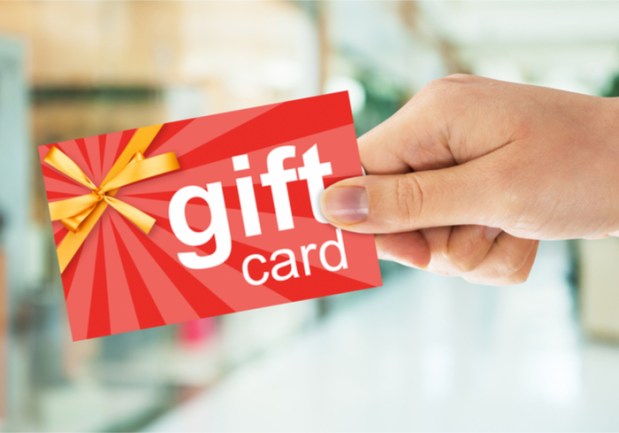How Gift Certificates Evolved From Paper To Wearables

In the 1930s, gift certificates made their debut at major department stores. But they weren’t available to everyone.
Clerks were told to hide the certificates and only sell them to select customers who asked for them.
Years later, McDonald’s brought gift certificates to the masses with its Christmas gift certificate program. With their fast food debut, other merchants — along with malls — started offering them.
But paper gift certificates came with their own challenges. They took time to make — and to redeem. And tracking the certificates with sequential numbering was a hassle. After all, the advent of color copiers meant that anyone could create and distribute a fraudulent gift certificate.
A few decades later, Neiman Marcus started distributing gift cards, but the retailer took a page from the 1930s department store playbook: It kept the cards out of sight and only sold them as novelty items.
It wasn’t until 1995 that they finally became popular with consumers — when Blockbuster began displaying them openly in stores.
Compared to traditional paper gift certificates, gift cards were a plastic card with a magnetic stripe. That bit of technology came in handy for, say, deducting the amount of a purchase from a card’s value.
The cards were an instant hit.
“We produced a small sampling for the stores in Salt Lake City,” Ron Goade, president of SSI Technologies, said on its website. “They flew off the shelves, and the market was born. The initial order for all the Blockbuster stores was in the millions.”
Gift Cards and the Coffee Shop
In the early 2000s, another retailer experimented with gift cards. Starbucks gave prototype gift cards to its employee partners when they attended a leadership conference in 2001.
Soon after, the coffee retailer brought its gift card to the masses, and they became as popular as a frappuccino on a hot summer’s day.
Between Nov. 2001 and July 2002, Starbucks’ customers activated a whopping 4 million of its gift cards, which came with an interesting bonus feature: If customers loaded $100 or more on the cards, they would receive a tin case for the card.
But the gift cards would make a quantum leap in 2009. Back then, Starbucks rolled out the next generation — a gift card that lived on mobile phones — in 16 stores.
Soon customers nationwide could pay for a Pike Place roast — or, yes, a unicorn frappuccino — with a barcode scanned with Starbucks’ point-of-sale (POS) system.
The idea was the brainchild of Benjamin Vigier. His implementation used a simple 2D barcode in a new way.
While it was more common for a user at the time to a scan a 2D barcode, Vigier took a different approach: He had the register scan the code.
The Future Is Wearable?
Ever so the early mobile adopter, Starbucks continues to roll out new mobile ordering functionalities on its branded app as well as on third-party applications.
In 2017, Starbucks announced a feature that allows iMessage users to send each other digital Starbucks gift cards in-app, like they can in the Starbucks mobile app. Gifters were able to pay via Apple Pay, while receivers use their phones to redeem their drinks.
That wasn’t the first gifting move Starbucks has made outside the confines of its dedicated mobile application. In Dec. 2016, Starbucks partnered with WeChat to provide its active users with an integrated social gifting feature (Starbucks also joined WeChat’s payments family in the process).
And Starbucks hasn’t stopped with in-chat purchases: The retailer also expanded its gift card technology to wearables. As of 2017, customers can load more money on their Starbucks card using Apple Pay on the Apple Watch.
According to news from 9to5Mac at the time, Starbucks customers could have previously reloaded the cards with the built-in mobile Wallet app. But consumers would have had to reload the card using an iPhone app — not the most seamless solution.
However, if the adoption of gift cards after Blockbuster is any indication, perhaps wearables will be the standard vehicle for gift cards in the future.
